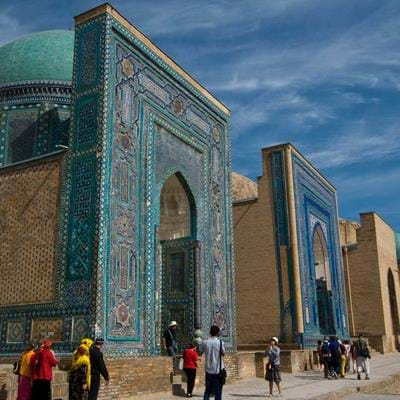Uzbekistan 21.02.2018 David Abram
Travel writer and photographer, David Abram, shares some of his favourite photos from a recent TransIndus trip to Uzbekistan
I really didn’t know what to expect from Uzbekistan. Most of what I’d learned about the country was a century and a half out of date, deriving from accounts of the ‘Great Game’, when Tsarist Russia and the British Empire were competing for influence in what was then among the most far-flung places on earth.
The region is, of course, no longer remote. You can fly to Tashkent in less than seven hours from London these days. The Islamic culture of Silk Road times has largely disappeared, after more than a century of suppression under Soviet rule. But many reminders of the region’s illustrious past do survive.
Foremost among these are the great monuments of the Timurid Dynasty and their successors. The Timurids’ splendid mosques and madrasas have been lavishly restored by the Uzbek government, and now look as crisp and impressive as they must have done in the time of Amir Timur (aka ‘Tamerlane the Great’), who once ruled over a vast empire in Central Asia from his capital, Samarkand.
On our trip we also experienced the renaissance in traditional arts, crafts and music that has gripped the country since the collapse of the Soviet Union. Some of our most memorable experiences were visits to potteries, wood carving workshops and carpet weavers, where the old techniques had been revived. Recitals by Uzbek and Tajik folk ensembles also served as evocative reminders of the Silk Road days, when Samarkand, Bukhara and Khiva were key stopovers on the overland journey between China and Europe.
The following selection of photographs will, I hope, give an impression of why the country’s monuments have cast such a spell over the centuries. They should also demonstrate why so many travellers return from Uzbekistan full of gratitude for the generosity of the Uzbeki people, who have to be among the most hospitable in Asia – and take great delight in having their portraits taken!
If you enjoy this selection, do visit the Uzbekistan pages of the TransIndus website, where you’ll find lots more of my images.
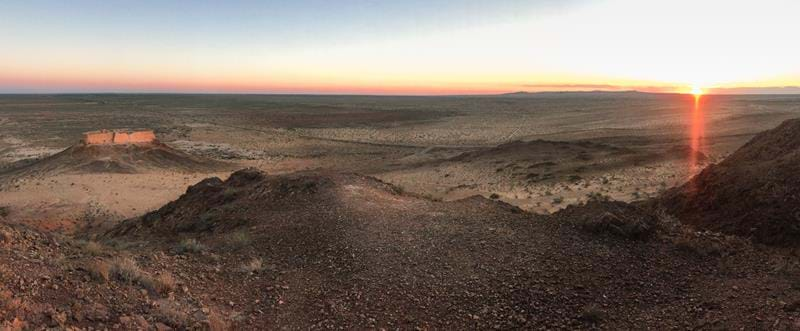
This photograph was taken in the Khorezm region of western Uzbekistan the day after I’d flown in from London, via a connecting flight to the town of Urgench. It shows Ayas Kalas, a 2,500-year-old fortress that was standing when Alexander the Great and his Macedonian army marched through here in the fourth century BC. I’d climbed up to the hilltop in the hope of catching a sunset shot and arrived just in the nick of time. The tranquillity of the desert and sense of endless space were a welcome tonic after long flight.
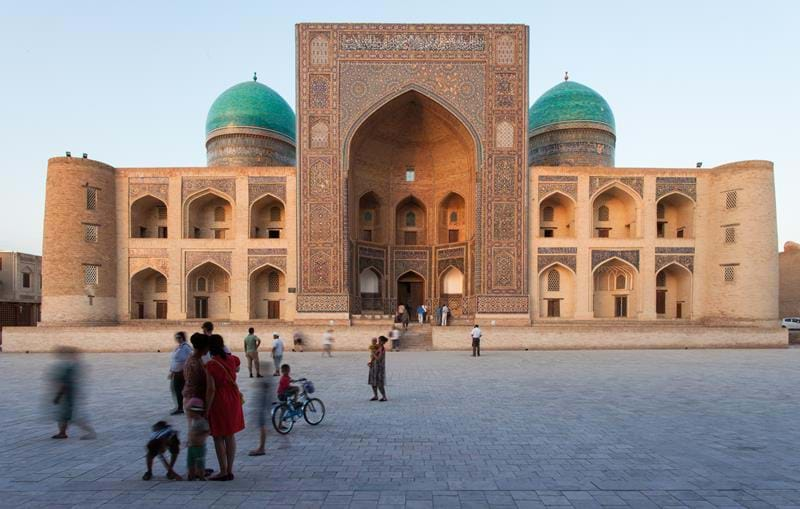
We’d given our guide the evening off and were sauntering rather aimlessly around Bukhara, soaking up the atmosphere of the old city, when we turned a corner into the Poi-i-Kalyan. I hadn’t done my homework and was totally unprepared for the scale and grandeur of the great square, with its huge minaret and madrasa (pictured). It was a bit like stumbling on a cathedral in Canterbury you didn’t know existed.
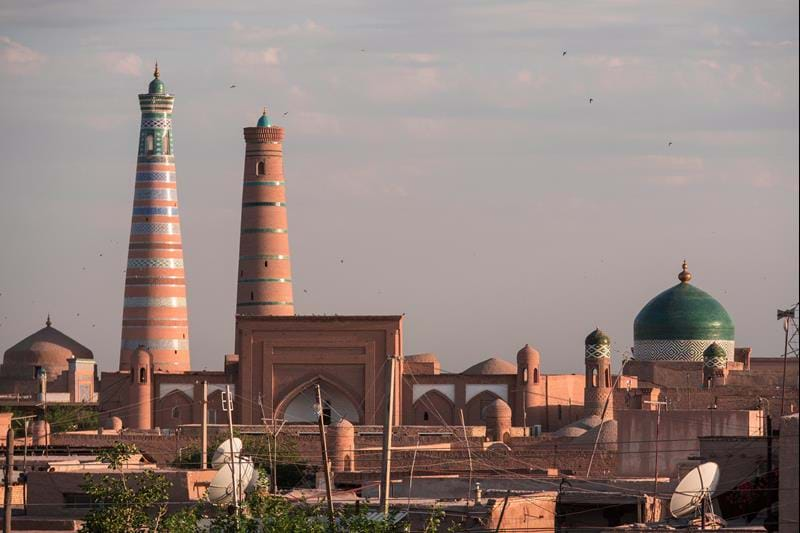
Apart from a few satellite dishes and electrical wires, Khiva’s skyline can’t have changed much in a couple of centuries. This shot was taken at sunset from the old city walls, which offer a wonderful vantage point.
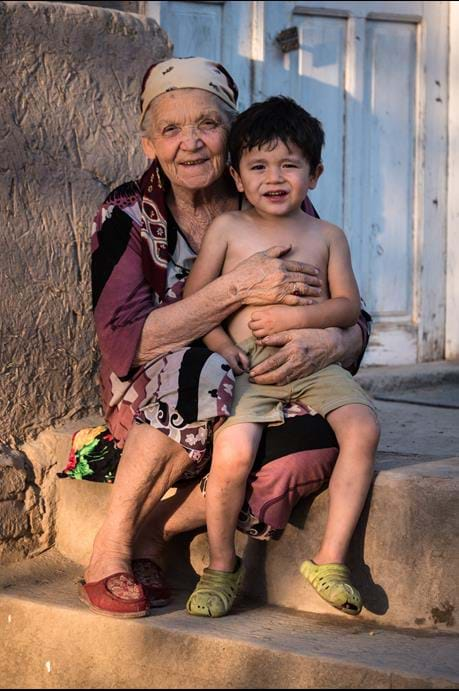
Captured minutes before the previous image, this photo of an old lady and her grandchild reminds me that the most precious moments in life are often the ones we barely notice at the time. I hope one day to be able to deliver a copy of it to them.
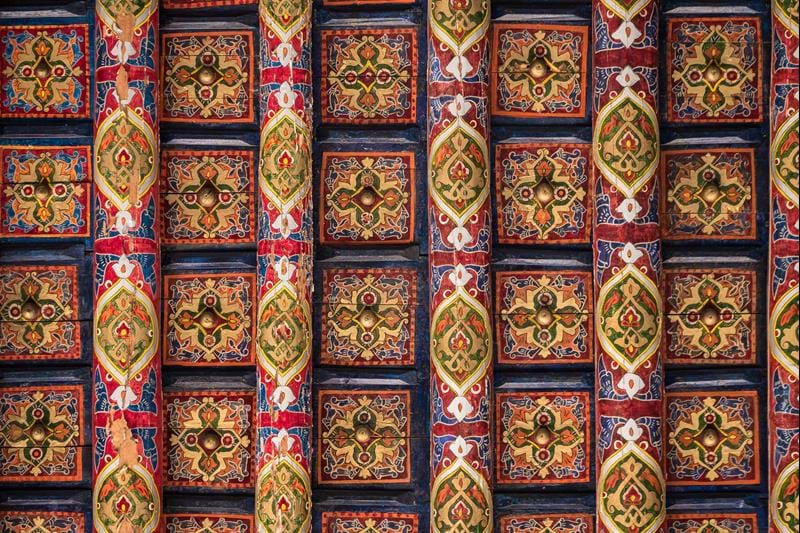
The painted ceilings in the palace at Khiva, where the queens and concubines of the Khan once lived, do not receive the attention they deserve from visitors, I think because they are so high that the detail is often missed. My telephoto lens reveals the feminine grace of the Persian-inspired patterns to great effect.
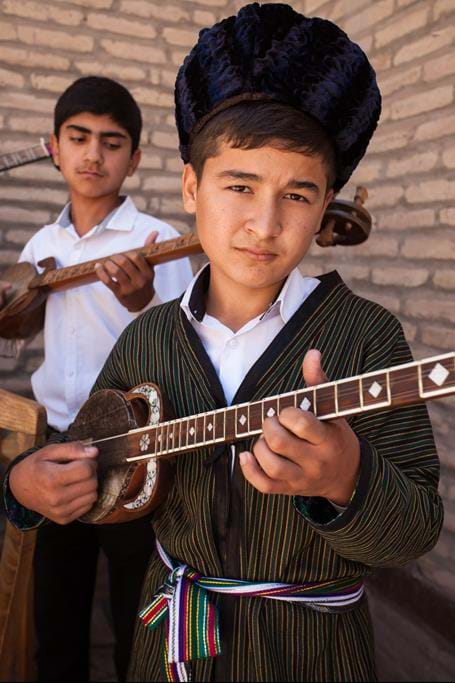
In the summer, troupes of folk musicians perform in the stone-paved squares of old Khiva. This teenaged Tajik dutar player was the star of his little orchestra. He’s wearing a traditional striped chapan and handsome Astrakhani hat.
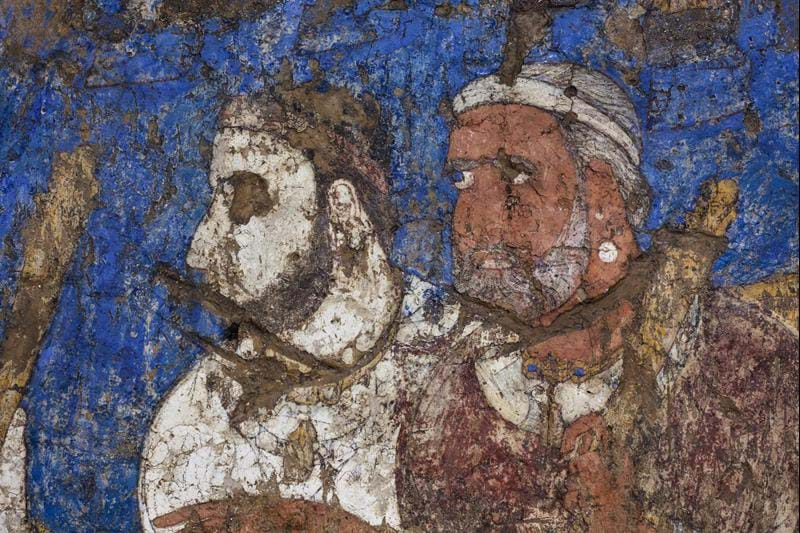
Samarkand is one of the oldest continually inhabited places on the planet, as this ancient Sogdian mural underlines. We found it in the museum on the site of Afrosiyab, a capital laid to waste by the Mongol army of Genghis Khan. The fresco dates from long before that – around 760AD. You’re not normally allowed to photograph treasures such as this with a tripod, but no-one objected, which allowed me to capture the colours in vivid detail, despite the low light of the gallery.
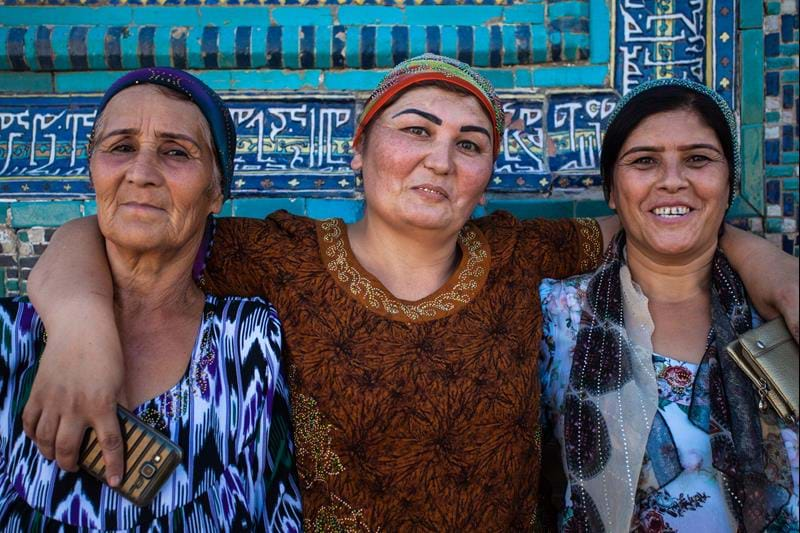
Among the unexpected highlights of Samarkand for me was the Shah-i-Zinda complex, where the Timurid Queens were buried in tombs encrusted in exquisite mosaic tiles. I loved it as much for the bus parties of feisty Uzbek women who pour through in the afternoons as the fabulous ceramic work.
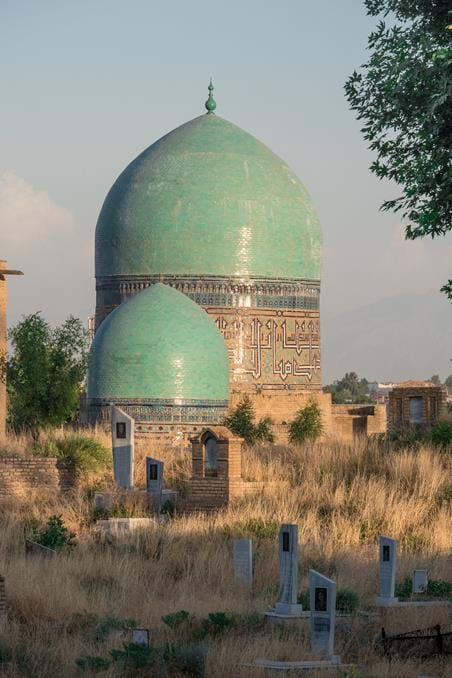
One of the turquoise-domed tombs at the Shah-i-Zinda. Modern gravestones lie scattered across the hillstop cemetery beside it – a striking example of cultural continuity.
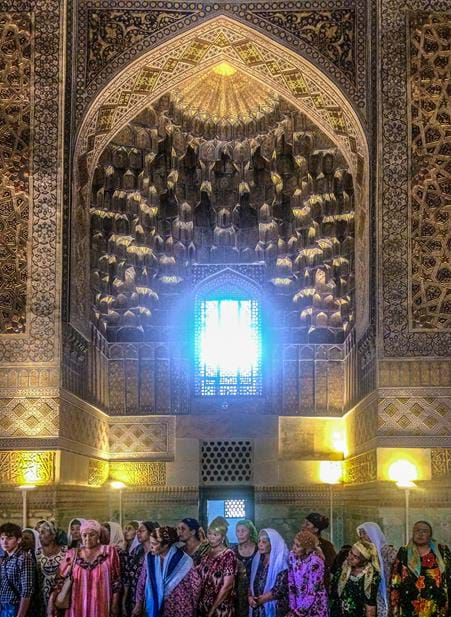
The hero of the Uzbek nation is Amir Timur (1336-1405AD), aka ‘Tamerlane the Great’, founder of the Timurid Dynasty. Timur conquered vast swaths of Asia and used the spoils to create some of the most splendid monuments ever built in the Islamic world. His sumptuously decorated tomb, the Gur-i-Amir, is revered as a sacred site by Uzbeks. This snap of women at prayer there was taken on my iPhone. An Imam was singing verses from the Qu’ran at the time – a beautiful moment in a beautiful place.
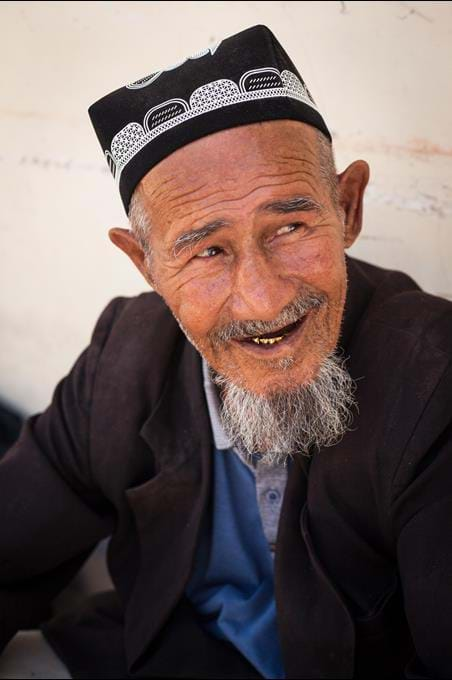
I took dozens of portraits of old Uzbek gentlemen in their traditional, square, black-and-white doppas, or ‘skullcaps’. But this was my favourite. His mates were ribbing him while I took it, hence the glinting, gold-toothed smile.
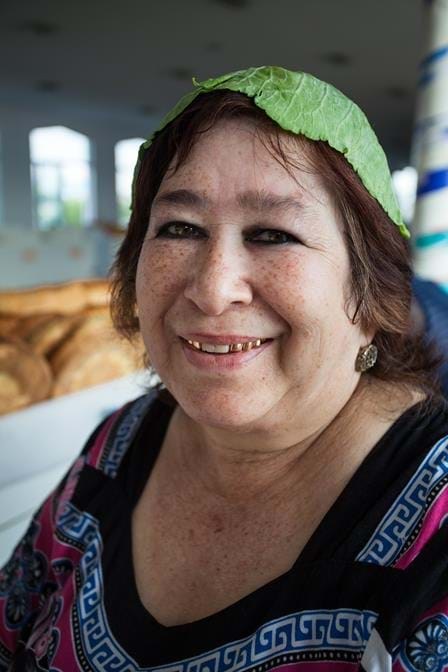
It was phenomenally hot and sticky in the bakery section of Tashkent’s Chorsu Bazaar when I was there, and one vendor had resorted to putting a cabbage leaf on her head to beat the heat. I’m not sure if this is a local tradition, or one of her own foibles, but it made for a nice portrait.
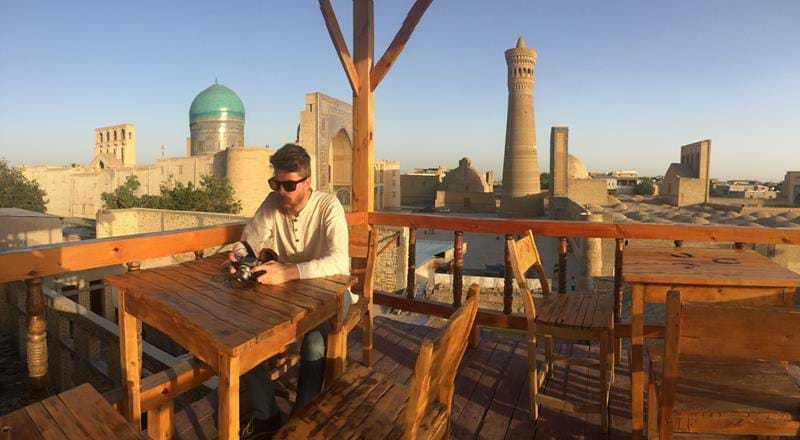
TransIndus consultant, Gary Meynell, checking through his photos in Bukhara. Dominating the background is the Minara-i-Kalan, one of the very few buildings Mongol warlord, Genghis Khan, spared when he razed the city in the 13th century. We were in Uzbekistan in the off-season, at the height of summer. The thermometer had peaked at 47 C (117 F) that afternoon and we enjoyed this spectacular view over a well-earned, ice-cold beer.
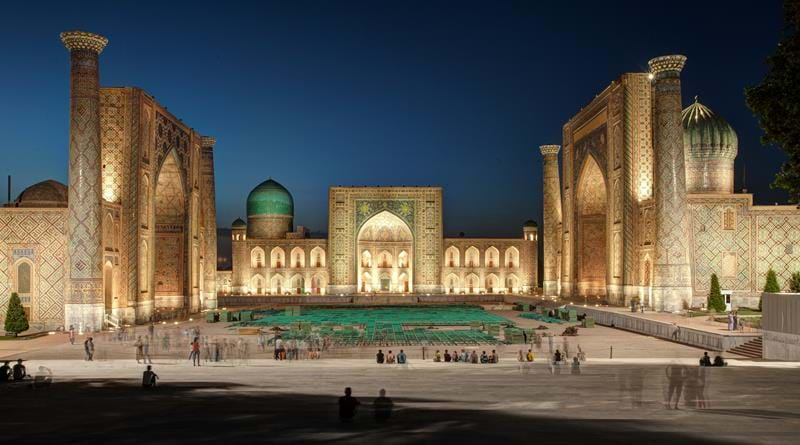
Every photographer who visits Samarkand has to get a shot of the Registan. My best was this ‘blue-hour’ image, which I made by merging three different long exposure images together. Iconic buildings often disappoint when you see them for the first time, but this one is every bit as jaw-dropping as it looks.
